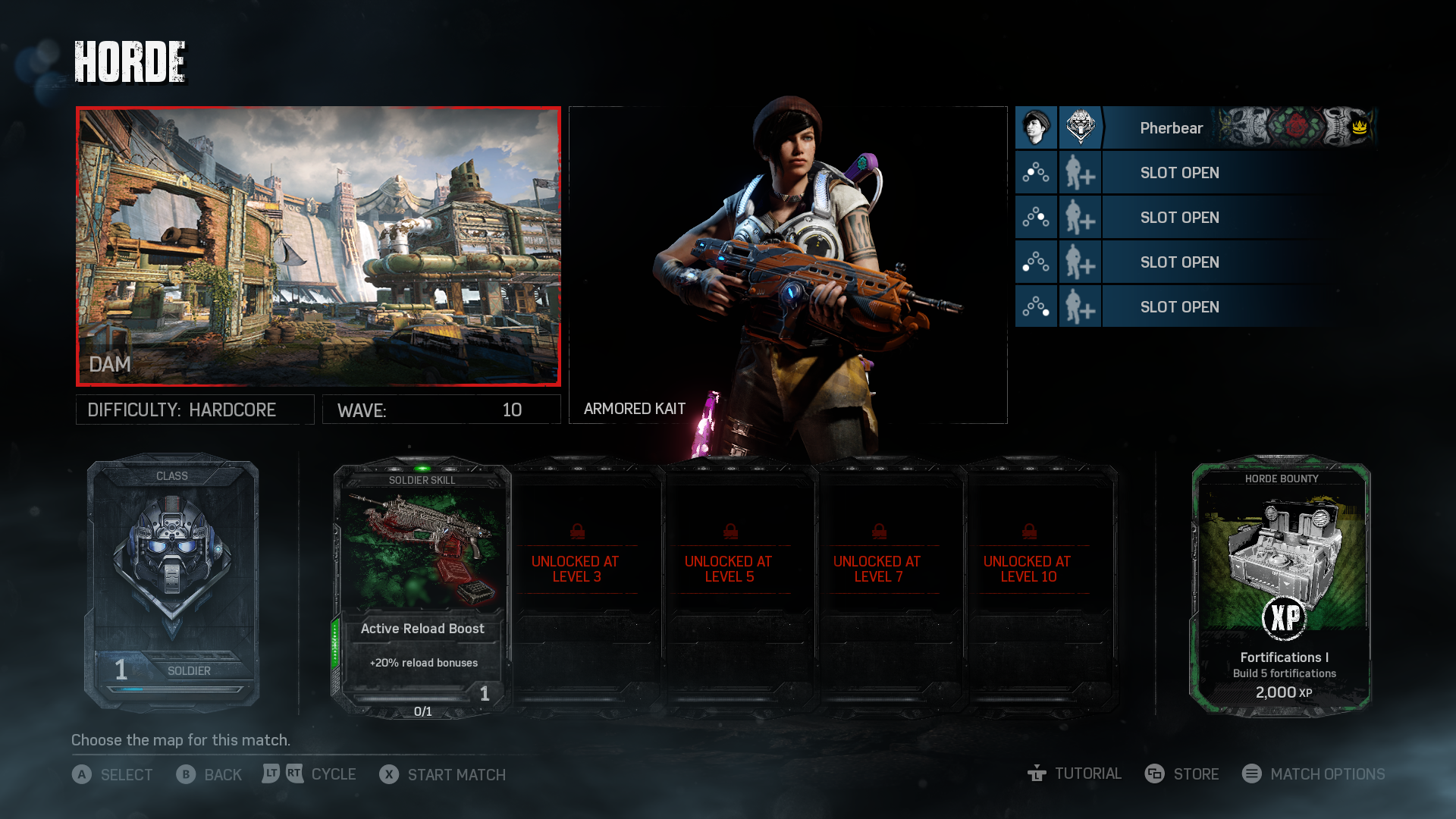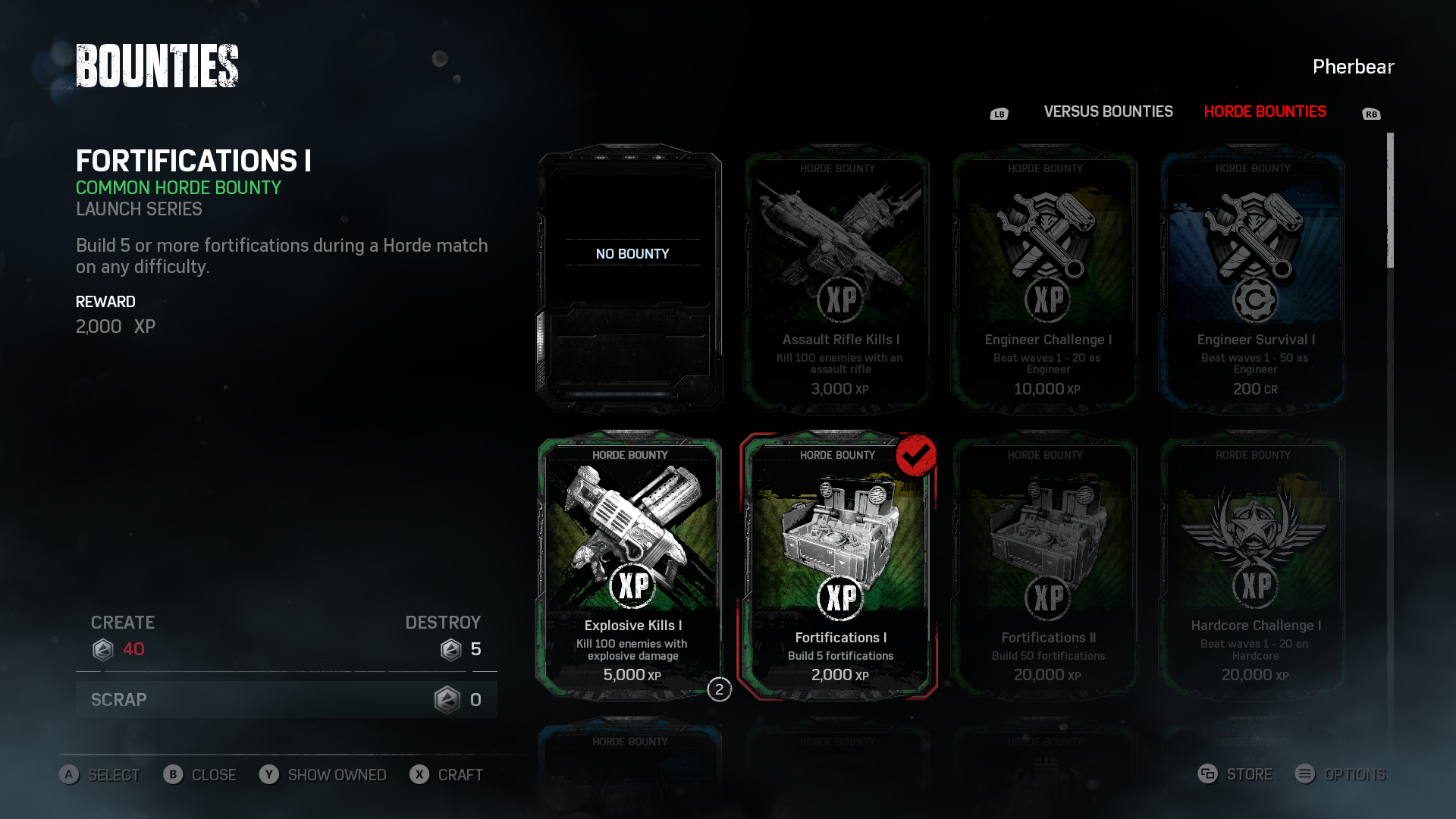
The five-player Horde mode returns with a few major upgrades, earning it a new version number! Horde 3.0 builds on the fortification aspect of Horde 2.0 in a couple nice ways. At the beginning of a Horde match, your team will have to grab a Fabricator - a miracle machine that can build all sorts of items - and then drag it to the point of the map you want to defend. Unlike last time, there’s no restriction on where you can build your fortifications - allowing you to add all sorts of choke points. Because you can choose to defend any point of the map, I found that it takes a little more time to learn what works best. Generally, as long as you can prevent enemies from gathering around your Fabricator, you should be okay.
Killing enemies during the round drops Energy, which you must bring back to the Fabricator in order to fill its reserves. Energy is shared across the team so communicating about what sorts of items you want to build and deploy will be pretty important, especially at higher difficulties. As with previous iterations, weapons and leftover Energy disappear from the arena each round, so be sure to grab what you need before the next round. Eventually, you can deploy a weapon locker to the battlefield where you can store weapons and fill their ammo reserves until they are needed. Don’t need that Mulcher just yet? Save it for a rainy day.
Horde 3.0 also lets players choose their class from the following: Heavy, Scout, Soldier, Engineer, and Sniper. Each class has their own starting loadout and special abilities. For instance, the Engineer has the passive ability to build all fortifications at a reduced cost and begins with a free Repair tool. As you continue to play Horde, you’ll level each class up independently, and will be able to gain additional skills at higher levels. You can also set "Bounties" to go after for each Horde round, which give you various boosts to currencies and XP after successfully meeting their requirements.

Skills and Bounties are earned through cards obtained in the now ubiquitous randomized treasure box, which is purchased using gold you earn for completing rounds of the various multiplayer modes. Much like Hearthstone, you can trash cards to gain scrap, then use said scrap to craft cards you’d like to use. If this isn’t your thing, you can always pony up some of your hard earned cash to buy the treasure boxes.
I would be remiss in failing to mention that Gears 4 is a part of the Xbox Play Anywhere initiative, which allows cross-platform play (and saves!) between Xbox One and PC players on Windows 10, with the exception of matchmade PVP multiplayer. While you can't play combo co-op in this manner, you do see which friends are on which platform with handy little icons on the screen.
The Gears of War series has always offered a solid, flexible co-op experience, and Gears of War 4 is no exception. Though I would have liked for the campaign to keep the four player mode, it’s still a great amount of fun. Horde 3.0 feels like it’ll have a decent set of legs due to the more flexible maps and experimentation with class/skill combinations. The Coalition has proven that the series is in good hands, and the future seems very bright indeed.
Verdict
Editor's Choice!
Co-Op Score
Overall
The Co-Op Experience: Co-op campaign with two players either locally or online is supported. Up to five players can team up online to tackle the revamped Horde mode. Additionally cross-platform play between the PC and Xbox One is supported in the campaign and Horde mode
Co-Optimus game reviews focus on the cooperative experience of a game, our final score graphic represents this experience along with an average score for the game overall. For an explanation of our scores please check our Review Score Explanation Guide.